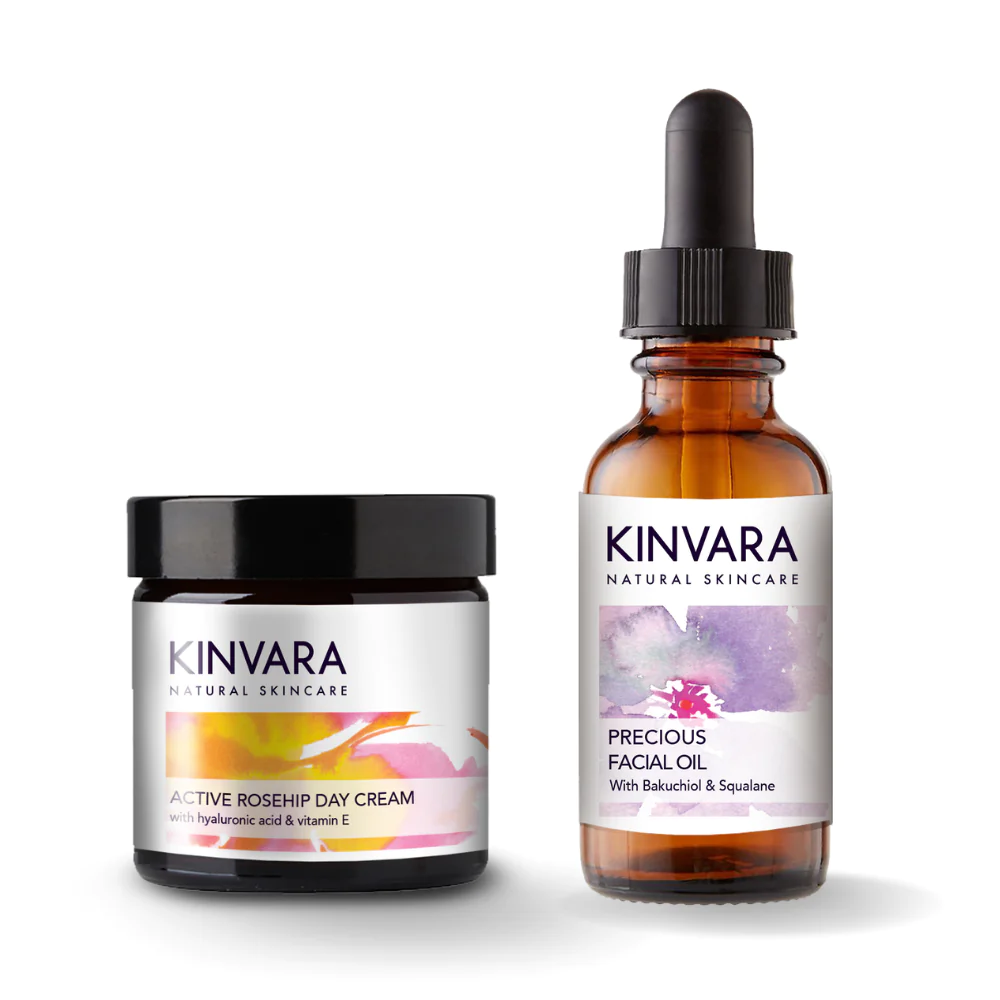If you’re like us, you’ve probably got a facial oil and/or serum in your skincare arsenal. And like many, you might not be sure what the difference is between the two.
Don’t worry, we’re here to help! In this blog, we decode the difference between facial oils and face serums.

Defining serums and oils
So, what is the difference between oils and serums?
Facial oils are liquids that are derived from natural oils and plant extracts. Serums, on the other hand, are made up of water and oil and are designed to penetrate the skin more deeply.
Serums usually contain a higher percentage of active ingredients than oils, which is why they're often recommended for helping with specific skin concerns such as wrinkles, blemishes or dryness. Oils, on the other hand, are best suited for hydrating and nourishing the skin.
However, it's worth noting that there are now a number of hybrid products that combine the benefits of both facial oils and serums. These products can be a great option if you're not sure which type of product is best for your skin type.
The benefits of using oils and serums

So, what are the benefits of using oils and serums?
Facial oils can be used to deeply hydrate the skin, while face serums can be used to target specific concerns like wrinkles, fine lines and sun damage.
Both facial oils and serum are packed with antioxidants, which help protect the skin from free radical damage. They also contain vitamins and minerals that nourish and revitalise the skin.
Serums are often lighter in texture than oils, making them a good choice for oily or acne-prone skin. Oils can be a bit heavier, so they are better for dry or mature skin.
The bottom line: both facial oils and serums offer a lot of benefits to the skin, so it's important to find one that suits your individual needs.
The difference between oils and serums
The main difference between oils and serums is that oils are designed to be left on the skin, while serums are designed to be absorbed. Oils are packed with antioxidants and vitamins, which help to nourish the skin and keep it healthy. Serums, on the other hand, usually contain a higher concentration of active ingredients, such as peptides or vitamins, which help to tackle specific concerns, such as wrinkles or dryness.
Serums are often seen as a more powerful products than oils, but this doesn’t mean that oils can’t be beneficial for the skin - they just offer different benefits. If you want to give your skin an intense dose of hydration and nourishment, opt for an oil. If you want to target specific concerns, opt for a serum.
How to choose the right oil or serum for your skin type
The best way to figure out which serum or oil is best for you is to first take a look at your skin type. Do you have oily, dry, or combination skin?
Once you've identified your skin type, it's then time to take a closer look at the ingredients. Serums will often have a range of active ingredients such as vitamins, antioxidants, and peptides, while oils will typically have a blend of nourishing and moisturising ingredients.
If you're not sure which serum or oil to choose, or you're dealing with multiple skin concerns, we always recommend our Precious Face Oil. It's perfect for all skin types and helps to give you an overall sense of balance.
The best oils and serums for each skin type
It can be tough to decode the difference between facial oils and serums, especially when they both seem to promise the same beautiful results. So, what's the difference?
Facial oils are, as the name suggests, made of oil. They're usually a blend of botanical oils that have been cold-pressed or steam distilled, and they work to hydrate and nourish your skin. Serums, on the other hand, are water-based and more lightweight than oils.
For dry skin: try a facial oil with argan oil, jojoba oil, or rosehip oil.
For oily skin: try a serum with glycolic acid or salicylic acid.
For combination skin: try a serum with hyaluronic acid or peptides.
For sensitive skin: try a serum with chamomile or lavender oil.
For normal skin: You can try any natural face oil or serum

How to use oils and serums
Both oils and serums can be applied morning and night, but we recommend using them differently.
When it comes to serums, a little goes a long way. Dab it directly onto your skin and use your fingers to massage it in. You only need a small amount, so don't be tempted to overload your face.
For oils, a little bit more is needed. Apply it to your dampened face (or use it as the last step of your skincare routine) and massage it in using circular motions. The heat from your hands will help the oil absorb into your skin, you can also use a gua sha stone to help the oil get into your skin.
Conclusion:
In general, facial oils are best for dry skin, while face serums are ideal for oily and combination skin types. However, there are exceptions to this rule, so it’s important to read the ingredients list and choose the product that is best for your individual skin type. Facial oils and serums both have their own unique benefits, so it’s important to use both products in your skincare routine to get the most out of them.




